The location is Notting Hill, London, UK. Nagasaki created the garden of the Freeman residence. It was originally a rear courtyard garden (20㎡) dating to the 1830s. The client brief specified a modern Japanese garden within the framework of an English garden. Nagasaki decided to achieve this by subtracting elements from the existing garden in order to combine Japanese and English. This garden contains three key viewpoints.
Firstly, Reflection Space.
Nagasaki selectively removed flagstones and part of the low brick wall to make a space 60cm×60cm (3.6㎡). A bamboo fence was erected and the space covered with silver granite gravel symbolizing the sea as a miniature garden-within-a-garden. Into two opposing sides of this space were inserted polished stainless steel sheets; their mutual reflection gives an infinite spread to this miniature garden.
Secondly, the Water basin area.
Nagasaki selectively removed more of the brick retaining wall of the flowerbed, and sited the granite water basin here. He installed a Kakei (waterspout) above the water basin, of glass in the form of a negative bamboo. This waterspout is illuminated by a bank of white LEDs embedded in the wall, to give an effect similar to moonlight. The thread of falling water creates a bubble of life on the water surface, combining spiral patterns and sound. Nagasaki intended this water basin area as the heart of this garden.
And thirdly, Trees and Fences.
The trees of the garden retained memories for the clients. The two principal existing trees, an Acer (osakazuki momiji) and Hemp palm were left in place and pruned. Other smaller trees were subtracted, and others transplanted for their health and overall aesthetic considerations. The balance of trees were harmonized with the height of the wall through the new composition. Nagasaki was able to amplify the sense of space by creating different material, color, height, and depth in the fence and wall.
Nagasaki’s method values the relation and balance between various materials, such as tree, stone, bamboo, burned wood, glass, metal, etc. He considers the garden as comprising the elements of sun, moon, fire, water, tree, metal (representing mineral), and soil. When these converge, the cycle starts and achieves harmony with nature.
The balance and convergence of various elements through subtraction gives a fresh form of expression to the garden, which through harmony and symbolism creates a meditative atmosphere.
Photographed in 2012
3 years and half month after the completion
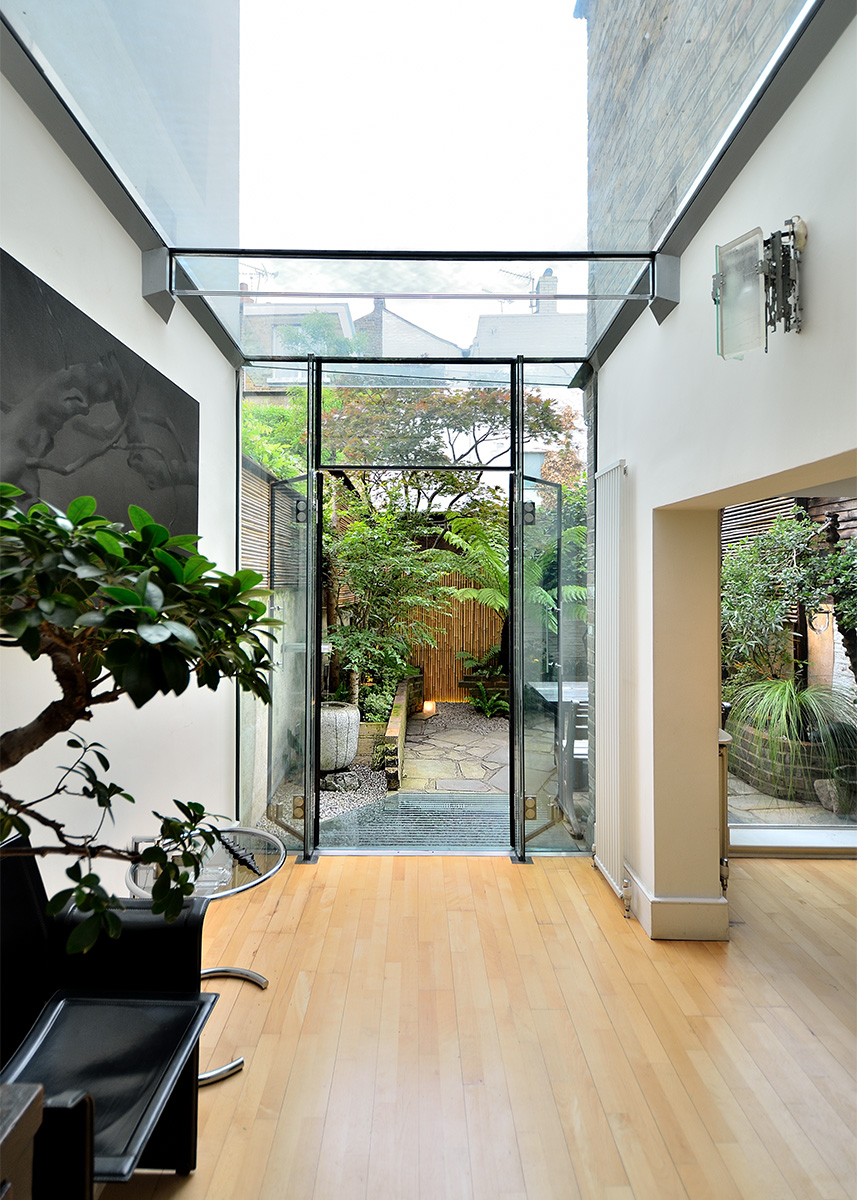
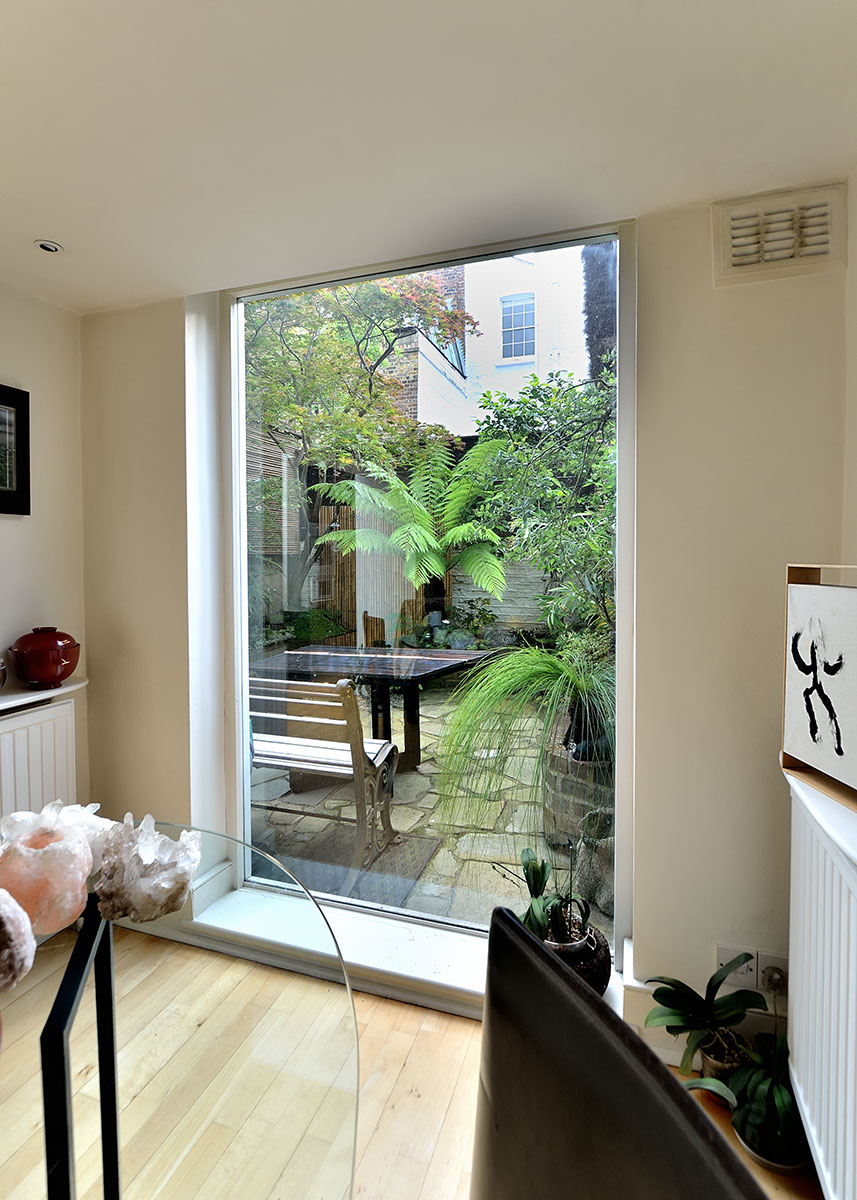
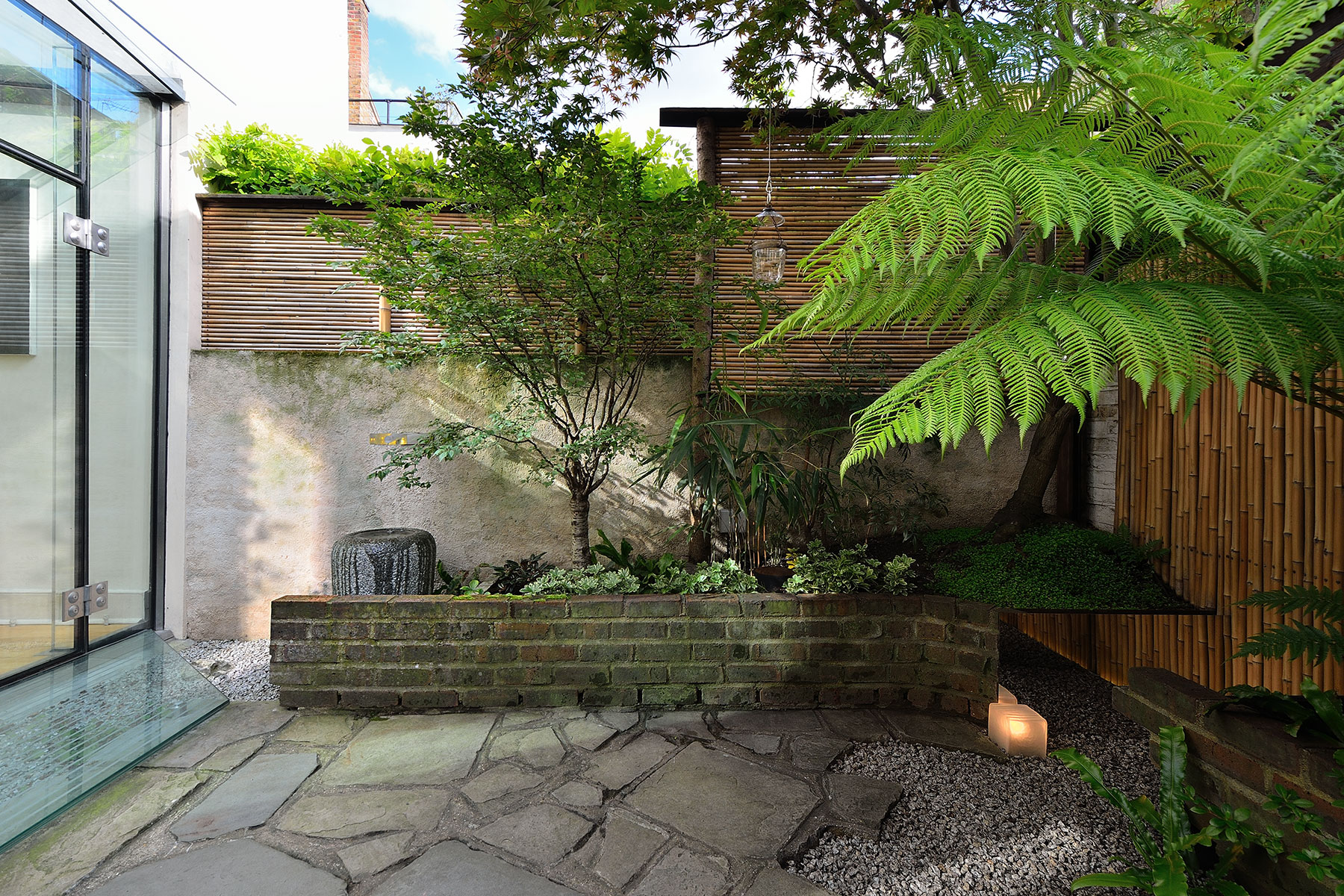
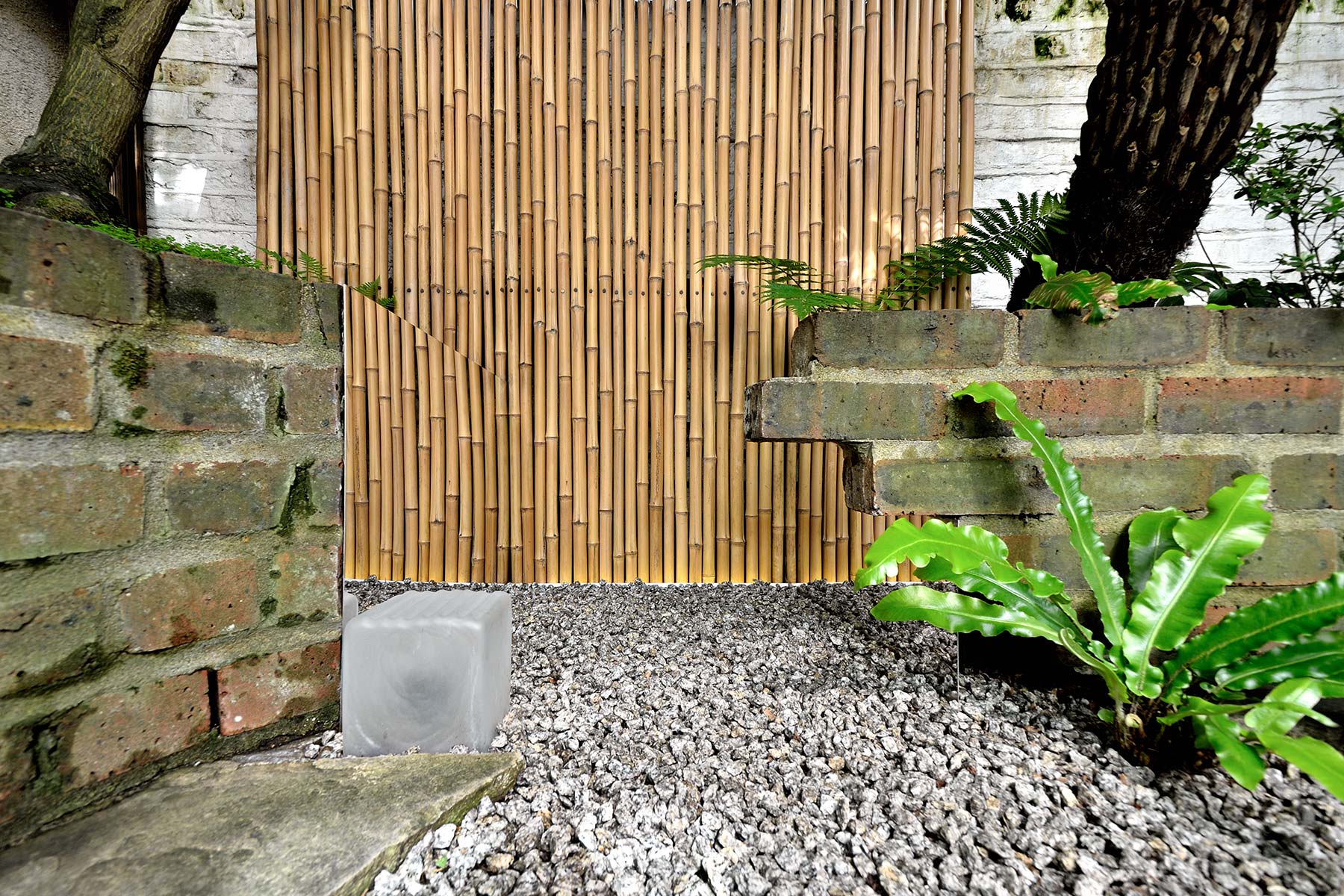
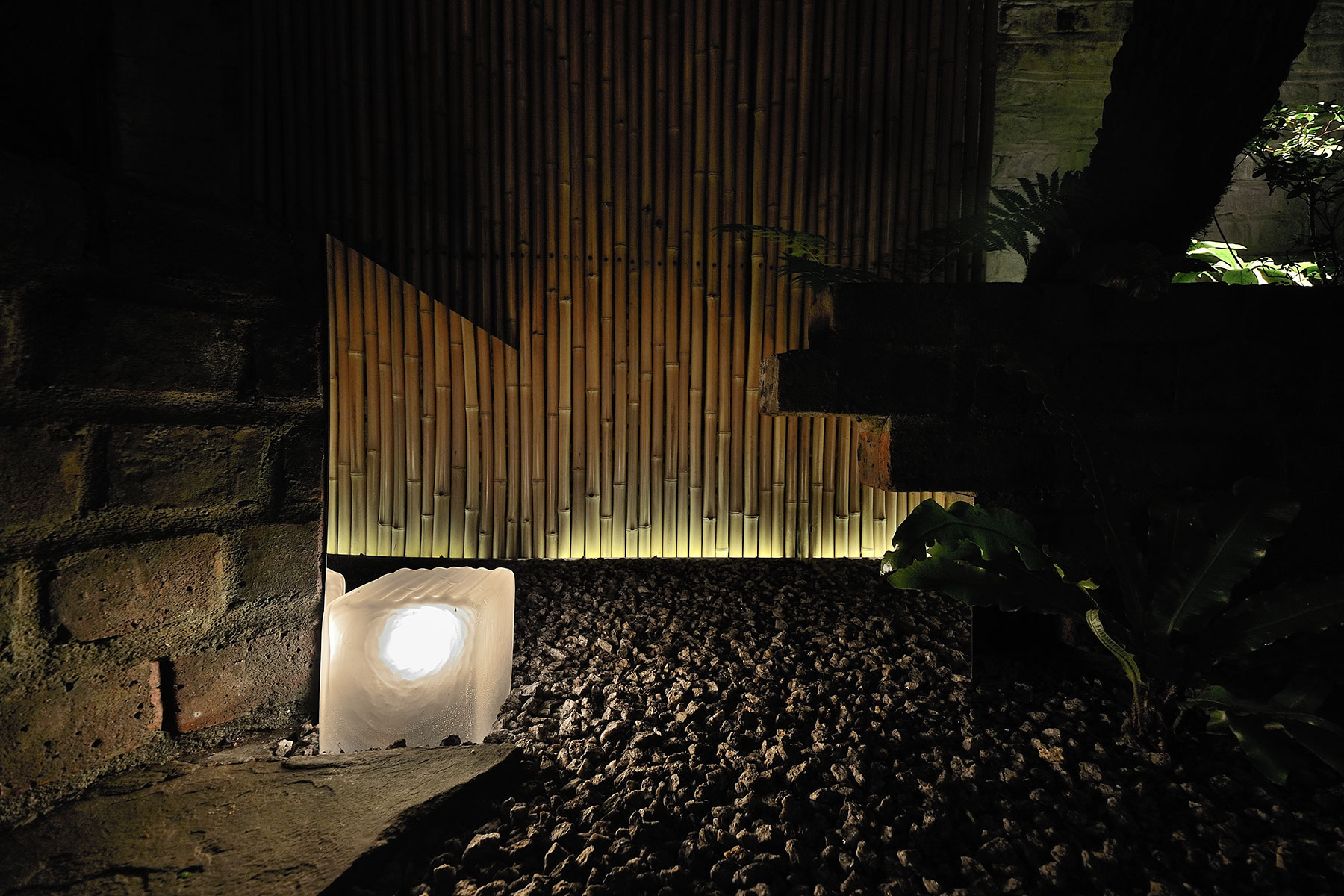
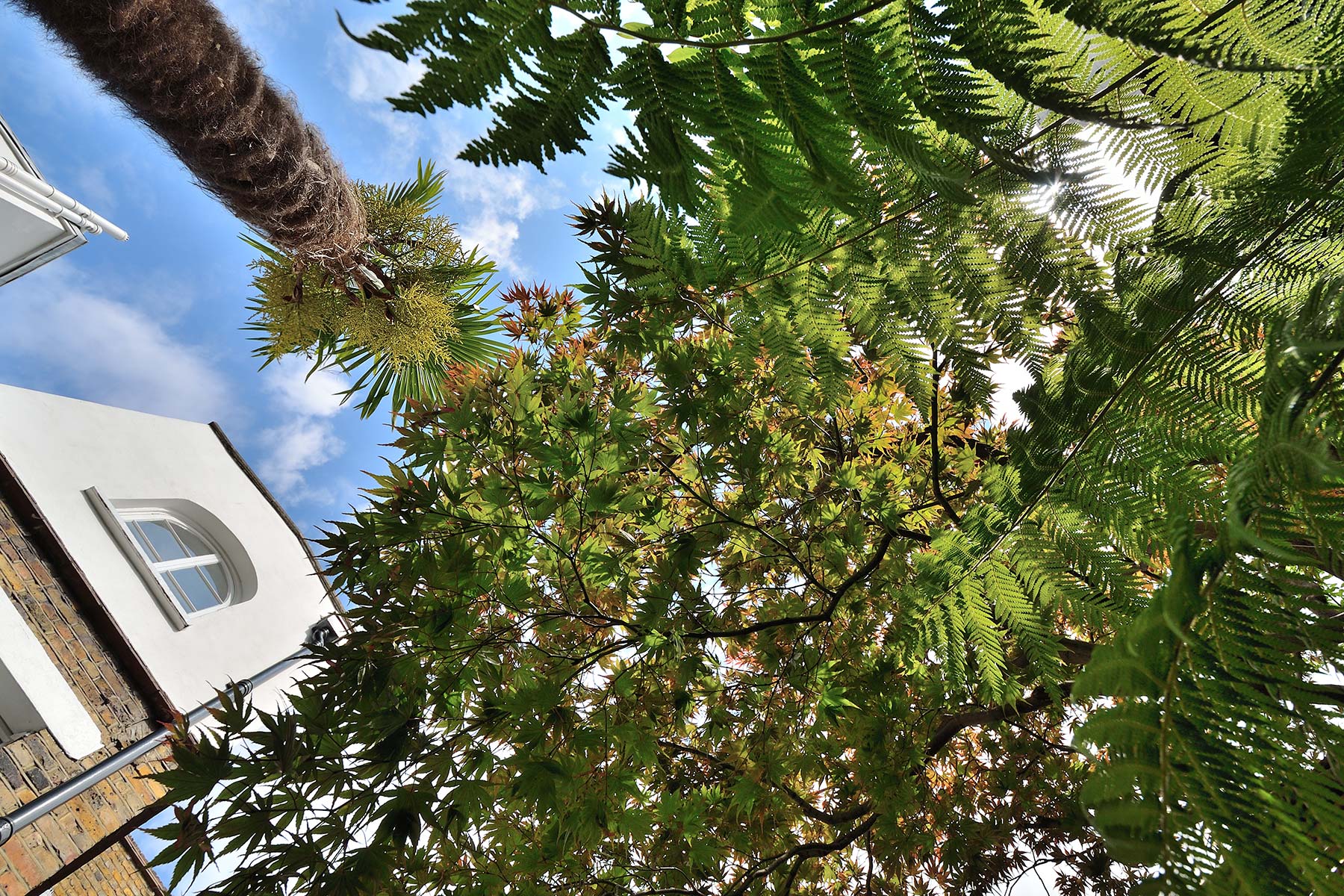
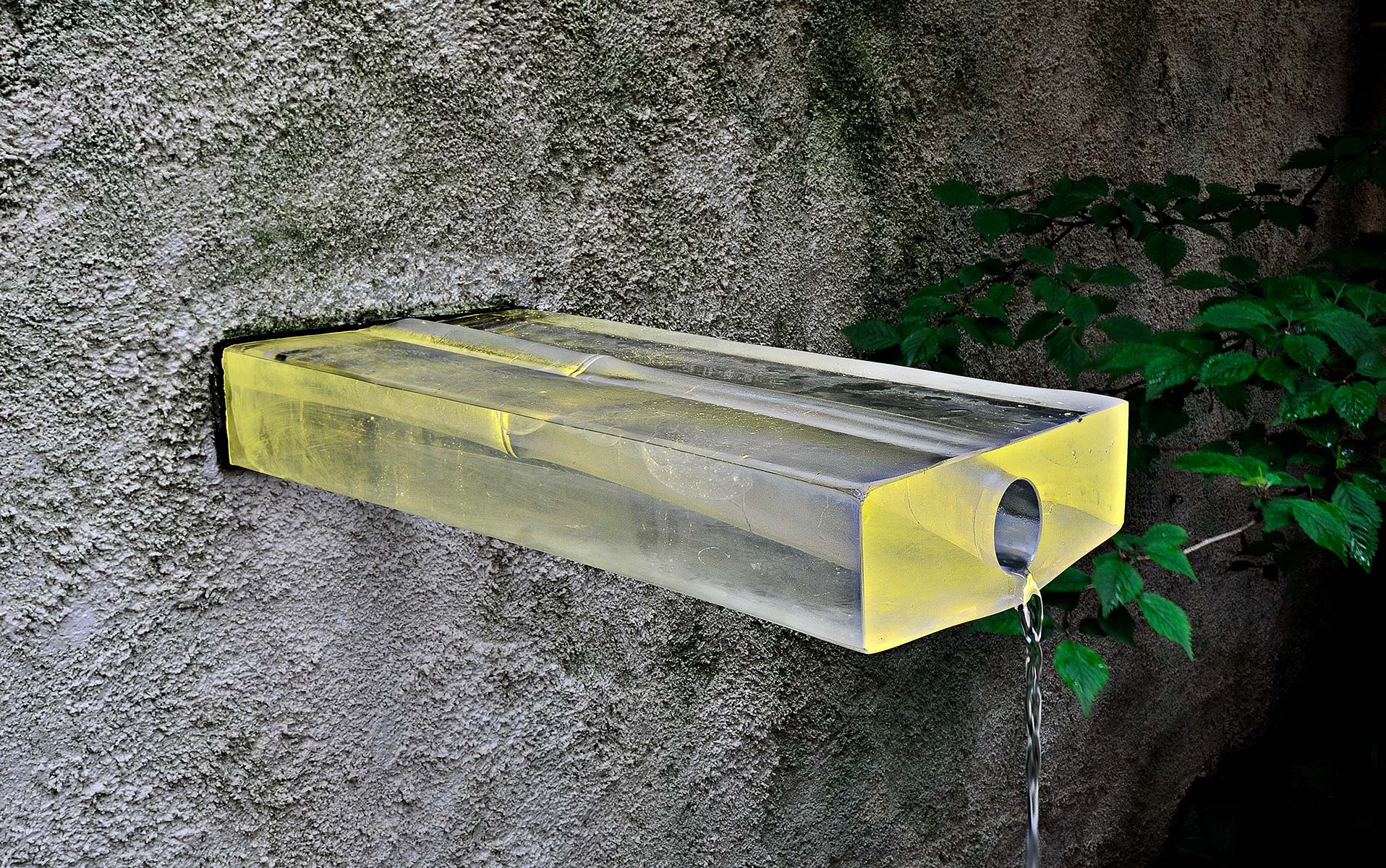
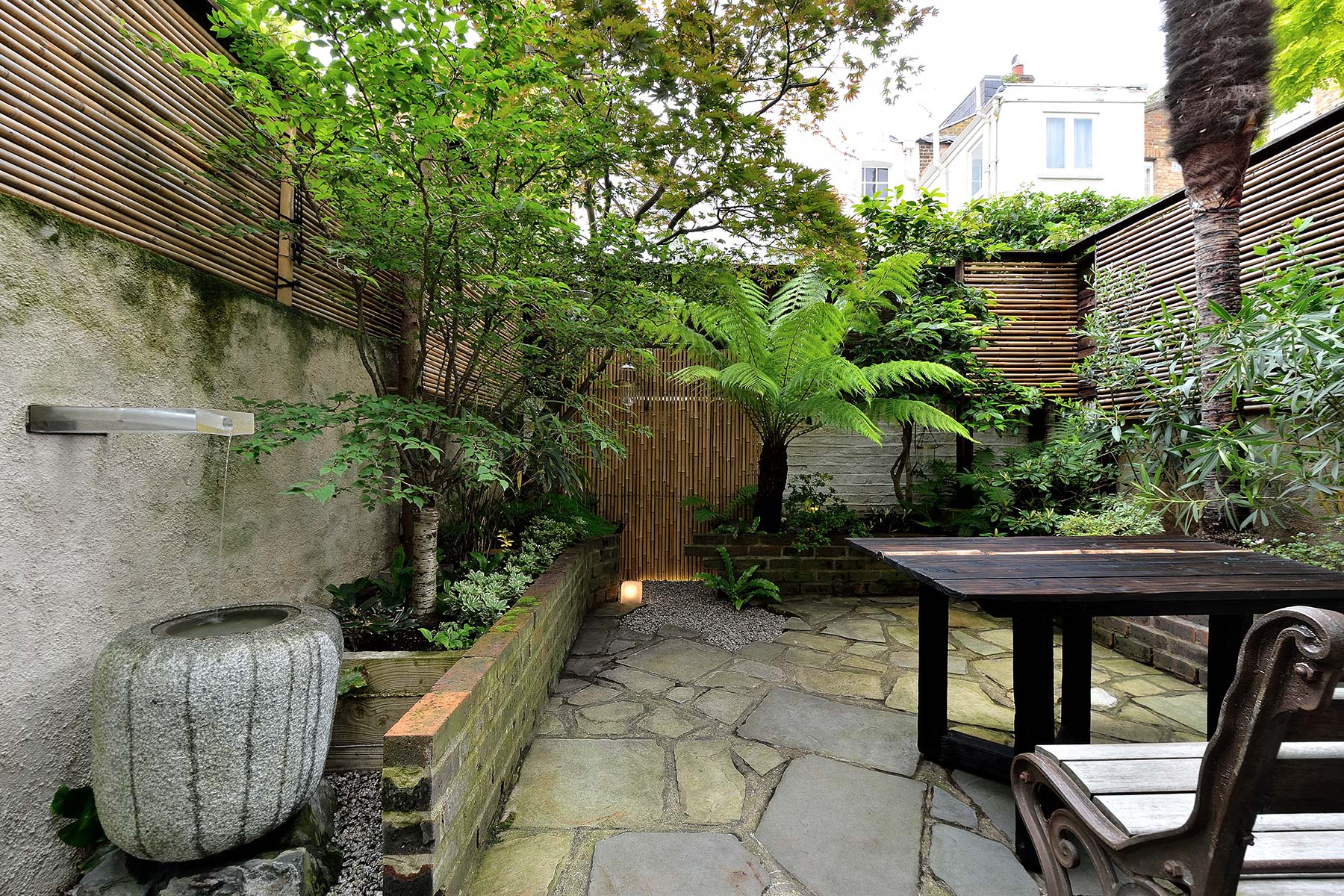
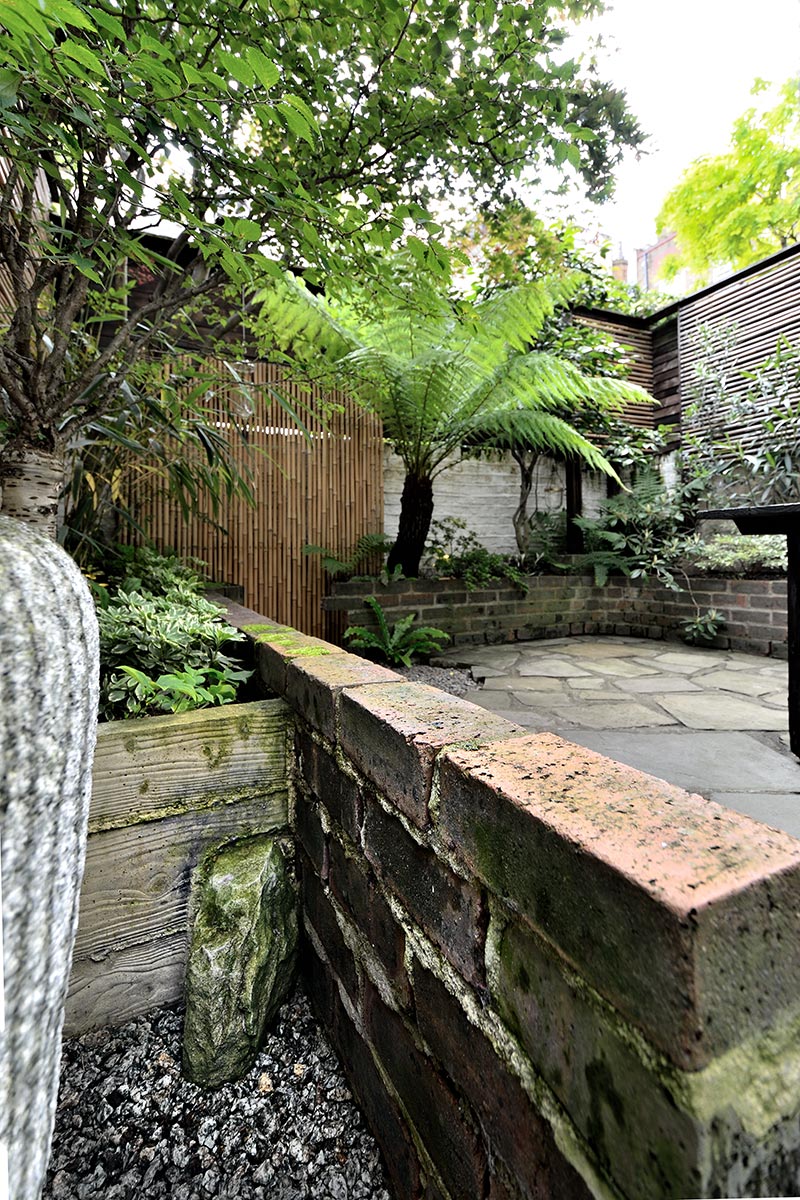
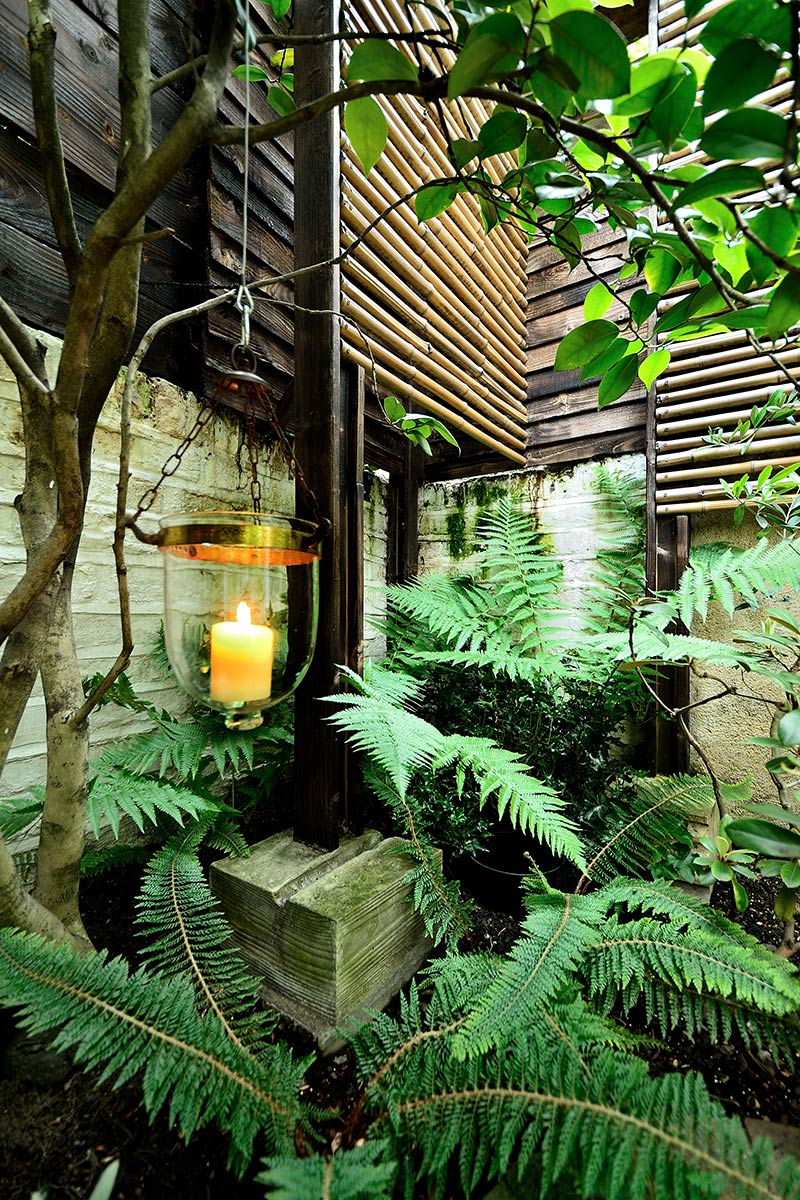 All photographs presented by © N-tree
All photographs presented by © N-tree